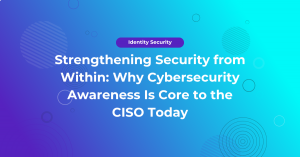Privileged access management is an important part of any cybersecurity policy. With the PAM market predicted to continue rapidly growing in the upcoming years, PAM implementation the #1 priority for many companies in Turkey.
The selection of PAM is a complex process that can be confusing if you do not know where to start. Day by day security officers looking for the best fit solution face the same questions.
Understanding Privileged Access and the Need for PAM
Privileged access extends beyond system administrators. Finance specialists, external vendors, and contractors often have permissions that can significantly impact business processes. Even small agencies managing major brands’ accounts hold critical credentials that require control.
For years, PAM was seen as a complex and costly solution, but growing cybersecurity demands and compliance requirements have made it indispensable.
To understand whether your organization needs PAM, start by identifying all privileged accounts — who uses them, where, and for what purpose. If credentials are shared among employees, stored insecurely, or left unmanaged, that’s a clear sign PAM is required.
The need for PAM typically becomes evident after incidents, compliance audits, or internal reviews reveal weak access controls. Companies that handle sensitive data or critical infrastructure should consider PAM implementation before such issues arise.
Initiating a PAM Project Inside the Organization
The initiative to implement PAM can come from different departments, most often from information security or IT operations. In smaller companies, where these functions are combined, IT typically takes the lead.
Conflicts sometimes arise between IT and information security teams — the first fears additional bureaucracy, the second pushes for stricter control. The key to resolving this tension is transparency: both departments share the same goal — protecting the company. Framing PAM not as surveillance but as accountability and risk reduction helps align priorities and ensure collaboration.
Implementing PAM: From Roadmap to Deployment
A typical PAM implementation follows a structured roadmap:
- Assessment and Inventory — Identify all privileged accounts, systems, and access paths.
- Planning and Design — Define which accounts to manage, what integrations are needed, and how PAM fits into the existing infrastructure.
- Proof of Concept (PoC) — Test functionality with real use cases to ensure usability and compatibility.
- Deployment and Integration — Roll out in stages, integrating with identity management, SIEM, and ticketing systems.
- Monitoring and Optimization — Continuously review usage, logs, and access patterns to fine-tune policies and improve efficiency.
This step-by-step approach ensures smooth adoption without disrupting business workflows.
Industry-Specific Features and Applicability
While PAM principles are universal, industry-specific factors influence implementation. Finance, telecom, energy, and government sectors face strict regulations and therefore adopt PAM earlier. Other industries, such as healthcare or manufacturing, follow as data sensitivity and digitalization increase.
In each case, the goal remains the same — protect privileged credentials, ensure accountability, and maintain compliance. Differences lie mainly in scale, regulatory frameworks, and integration complexity.
Selecting the Right PAM Solution
When choosing a PAM system, organizations should focus on both business and technical aspects:
- Business and functional criteria: compliance coverage, usability, scalability, and vendor reliability.
- Technical criteria: system architecture, available modules, integration with existing infrastructure (such as Active Directory, SIEM, ITSM), and deployment model (on-prem, cloud, or hybrid).
Support and maintenance: responsiveness and quality of vendor technical support are crucial for long-term stability.
For large or complex infrastructures, scalability is vital. Regional PAM components may be needed for local management while keeping centralized control and monitoring. A well-chosen solution should maintain performance, availability, and detailed audit capabilities.
Selecting a PAM tool isn’t about choosing the most popular vendor — it’s about matching the organization’s specific risks, workflows, and security priorities.
Cost, Value, and Licensing Models
PAM used to be perceived as a luxury, but it’s now a standard part of cybersecurity strategy. The investment pays off through reduced risk, faster incident response, and stronger compliance.
Licensing models vary depending on the vendor and usage pattern:
- Per user or account — suitable for stable teams with a fixed number of administrators.
- Per session — ideal for organizations with fluctuating privileged access activity.
- Per resource or endpoint — works best when managing many systems with limited admin users.
Choosing the right model depends on how access is distributed within the organization. When evaluated against potential breach costs, PAM’s return on investment becomes clear — it prevents losses that could otherwise be devastating.
Trends and Future of Privileged Access Management
The future of PAM is shaped by automation, zero-trust architecture, and dynamic access models.
Just-in-time (JIT) access is becoming standard — privileges are granted only when needed and automatically revoked afterward, minimizing risk exposure. Integration with identity governance, ITDR, and cloud platforms is deepening, providing unified visibility across environments.
Modern PAM systems emphasize usability, automation, and compliance alignment. As attacks grow more sophisticated, PAM evolves from a niche control tool into a central element of enterprise security — protecting both human and machine identities.



